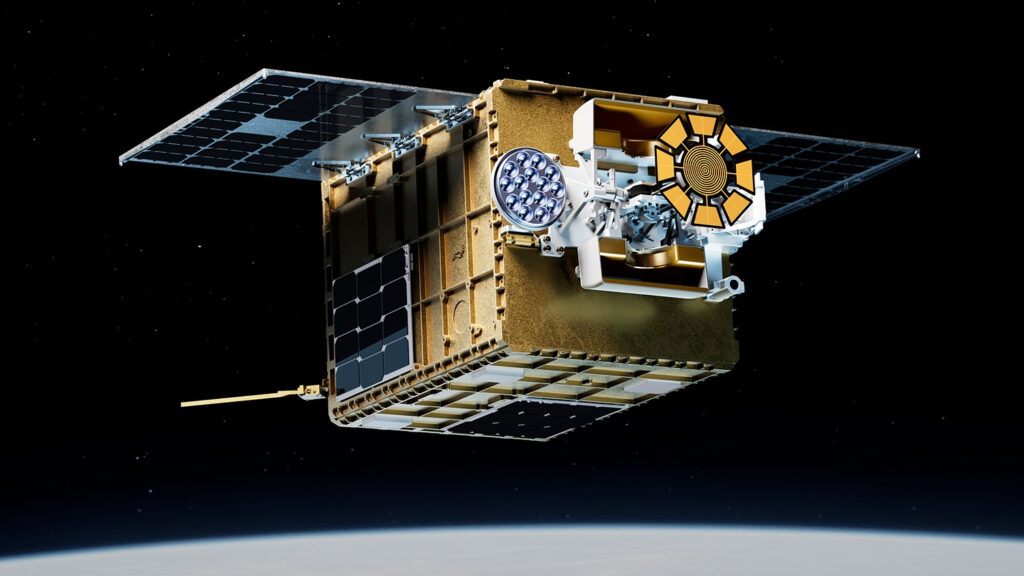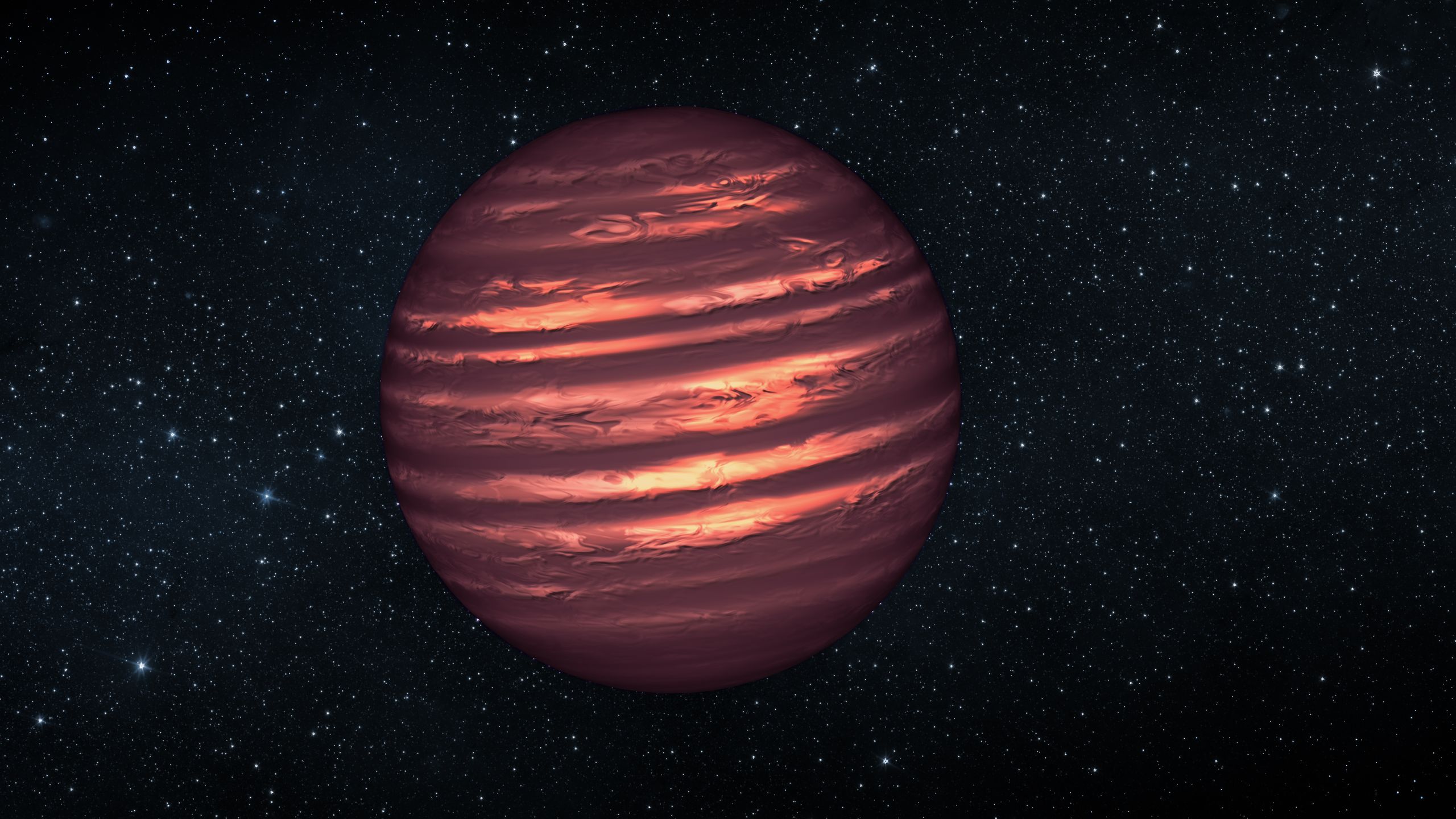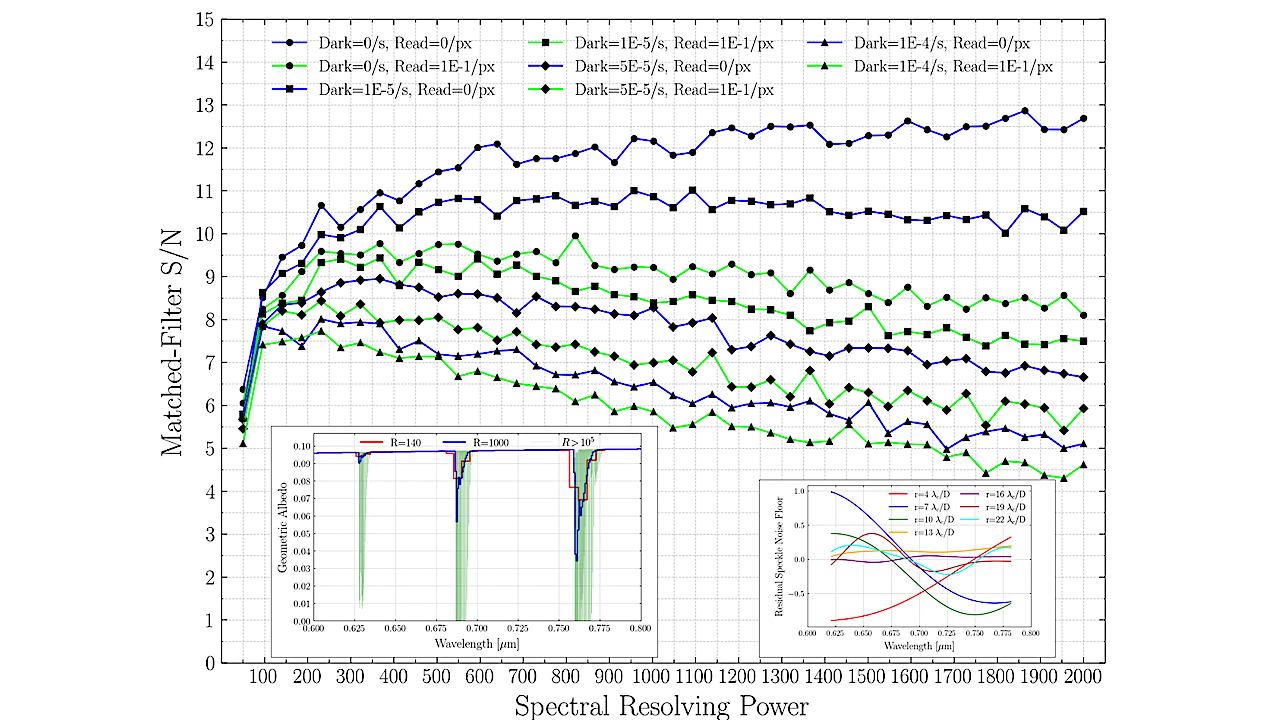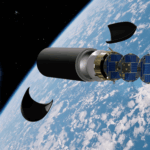Now Reading: European Mars orbiter spies interstellar comet 3I/ATLAS zooming past Red Planet (photos)
-
01
European Mars orbiter spies interstellar comet 3I/ATLAS zooming past Red Planet (photos)
European Mars orbiter spies interstellar comet 3I/ATLAS zooming past Red Planet (photos)

A European Mars probe witnessed the interstellar comet 3I/ATLAS’ Red Planet flyby last week.
On Oct. 3, 3I/ATLAS zoomed within 19 million miles (30 million kilometers) of Mars. The European Space Agency‘s (ESA) ExoMars Trace Gas Orbiter (TGO) was ready for the closeup, snapping imagery of the interloper using its Colour and Stereo Surface Imaging System (CaSSIS).
“This was a very challenging observation for the instrument,” CaSSIS Principal Investigator Nick Thomas said in a statement released by ESA on Tuesday (Oct. 7). “The comet is around 10,000 to 100,000 times fainter than our usual target.”

Comet 3I/ATLAS was discovered this past July by the Asteroid Terrestrial-impact Last Alert System (ATLAS) telescope in Río Hurtado, Chile. The “3I” in its name indicates that it’s just the third confirmed interstellar object observed in our solar system, after 1I/’Oumuamua in 2017 and 2I/Borisov in 2019.
Astronomers are keen to learn as much as they can about such visitors, which carry with them information about distant and mysterious realms.
“Every planet, moon, asteroid, comet and lifeform in our solar system share a common origin,” ESA officials said in the statement. “But interstellar comets are true outsiders, carrying clues about the formation of worlds far beyond our own.”
In 3I/ATLAS’ case, those clues suggest an origin that’s ancient as well as exotic: Astronomers think it’s the oldest comet ever observed, with a birth that predates that of our own solar system by perhaps three billion years.
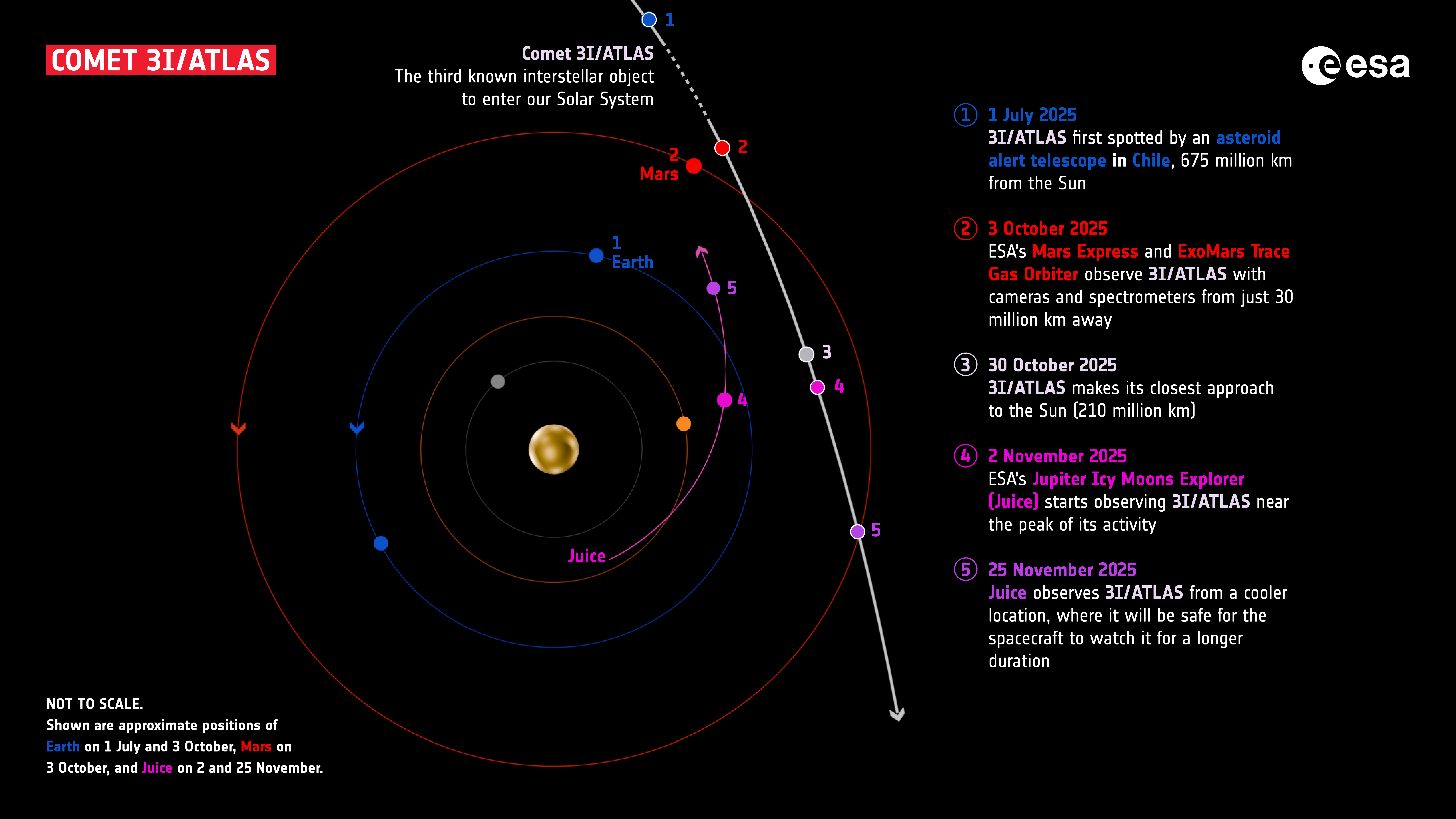
The observations made by TGO — which reached Mars in 2016 to sniff out methane and other trace gases in its atmosphere — were part of a concerted ESA campaign to study 3I/ATLAS as it cruises through the solar system.
For example, the agency’s Mars Express orbiter, which has been circling the Red Planet since 2003, also attempted to photograph the comet on Oct. 3. Scientists have not yet resolved 3I/ATLAS in Mars Express imagery, “partly because these were taken with an exposure time of just 0.5 seconds (the maximum limit for Mars Express) compared to five seconds for ExoMars TGO,” ESA officials said in the same statement.
“Though our Mars orbiters continue to make impressive contributions to Mars science, it’s always extra exciting to see them responding to unexpected situations like this one,” Colin Wilson, Mars Express and ExoMars project scientist at ESA, said in the same statement. “I look forward to seeing what the data reveals following further analysis.”
Related Stories:
Other spacecraft will turn their eyes on the icy object in the coming months as well, including ESA’s JUICE probe, which is on its way to Jupiter (its name is short for Jupiter Icy moons Explorer).
JUICE will start looking for 3I/ATLAS on Nov. 2, just three days after the comet makes its closest approach to the sun (which will come at a distance of 130 million miles, or 210 million km).
3I/ATLAS will likely be in a more active state at this point, giving JUICE a real chance to resolve it, even though the Jupiter probe will be farther from the comet than ESA’s Mars probes were on Oct. 3.
Stay Informed With the Latest & Most Important News
-
 012024 in Review: Highlights from NASA in Silicon Valley
012024 in Review: Highlights from NASA in Silicon Valley -
 02Panasonic Leica Summilux DG 15mm f/1.7 ASPH review
02Panasonic Leica Summilux DG 15mm f/1.7 ASPH review -
 03From Polymerization-Enabled Folding and Assembly to Chemical Evolution: Key Processes for Emergence of Functional Polymers in the Origin of Life
03From Polymerization-Enabled Folding and Assembly to Chemical Evolution: Key Processes for Emergence of Functional Polymers in the Origin of Life -
 04How New NASA, India Earth Satellite NISAR Will See Earth
04How New NASA, India Earth Satellite NISAR Will See Earth -
 05And Thus Begins A New Year For Life On Earth
05And Thus Begins A New Year For Life On Earth -
 06Astronomy Activation Ambassadors: A New Era
06Astronomy Activation Ambassadors: A New Era -
07SpaceX launch surge helps set new global launch record in 2024














